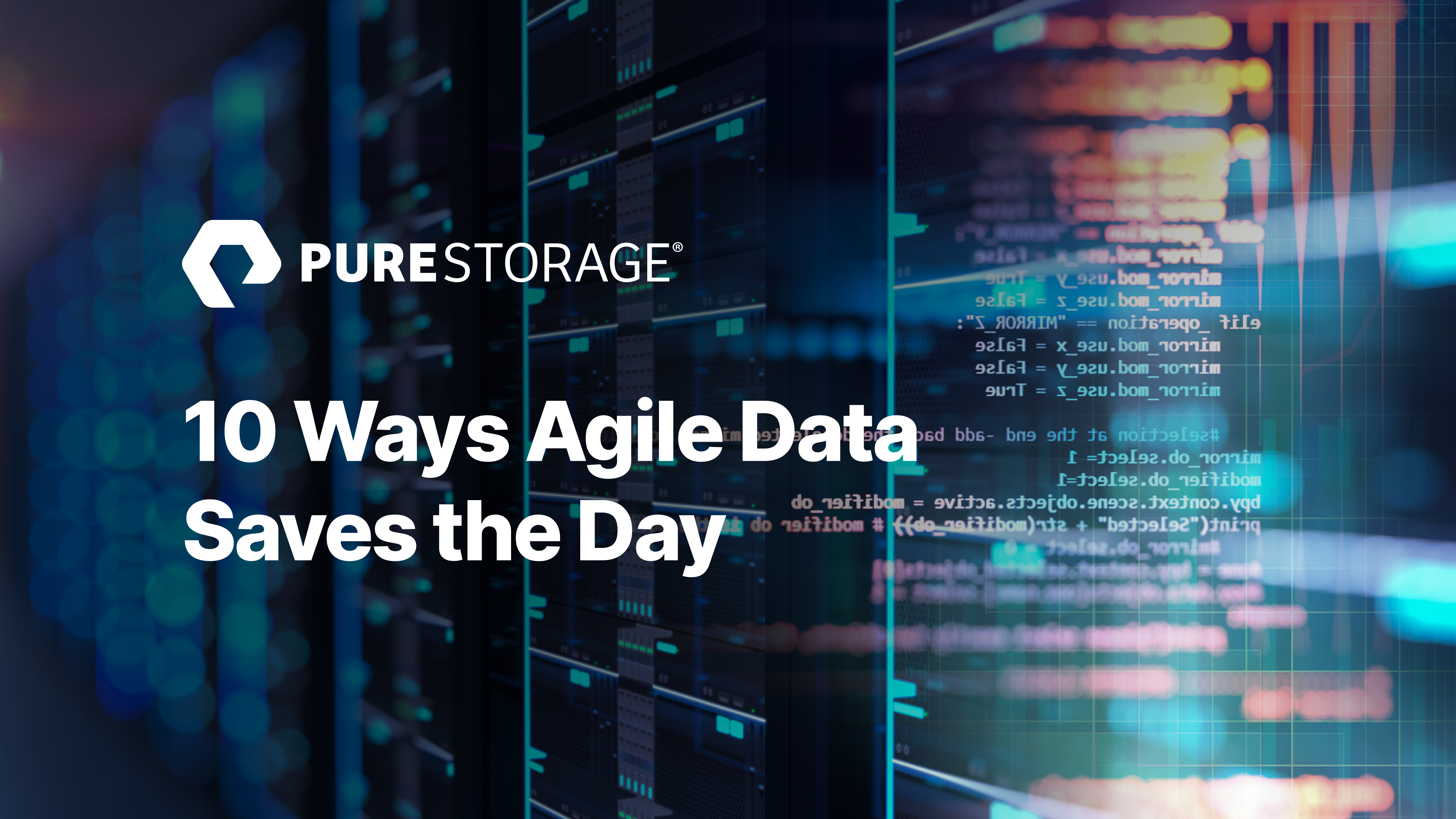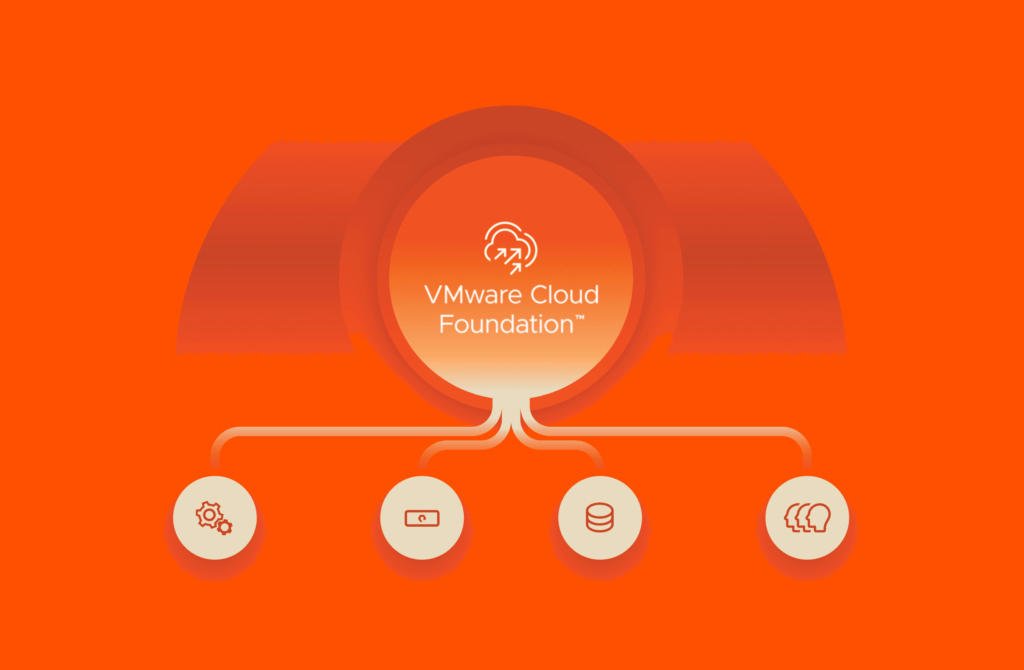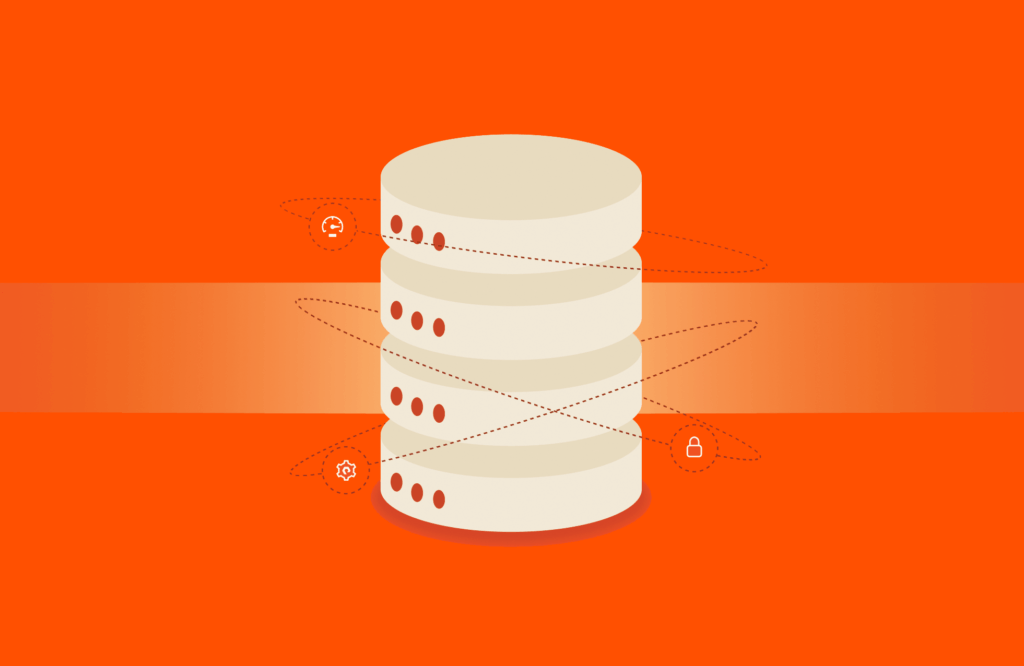Data provides essential insight that can help businesses take calculated measures to improve the performance and success of their products and services. Understandably, data is extremely valuable to organizations in any industry when it comes to designing and enhancing products. But it’s not about how much data you have. Often, what matters most is how quickly you can access it and turn it into insights.
Whether it’s a better understanding of what customers want and need, input from sensors and edge technology, productivity hacks, or security threats, agility can help you deliver better products and superior user experiences. Let’s look at 10 specific cases in which agile data can make or break an experience or outcome.
1. Engineering F1 Wins with Real-Time Sensor Data
Formula 1 teams are becoming increasingly reliant on technology, forming strategic partnerships with technology companies like AT&T and Pure Storage and using real-time data to improve race-day strategies. Data can be used to measure and monitor several factors that influence performance, including tire pressure, aerodynamics, suspension, and driving styles. Data related to performance and conditions can also be gathered during testing and racing from hundreds of sensors installed throughout the cars.
This data can then be used to inform changes that should be made to both a team’s cars and driving strategy. For example, in a car’s engine, sensors can be used to collect and relay data related to temperature, pressure, and timing. Engineers can then make sure that these metrics are within limits to ensure the health of the engine. They can even send information back to the engine’s manufacturer, where it can be used to enhance product design and performance in future engine components.
2. Powering Stock Market Apps with Global Data
Trading apps have grown in popularity over the past few years, with popular apps like Robinhood attracting 3 million new users in just four months. Real-time data is used extensively in many trading applications to create intraday charts, monitor potential profits and losses, and get up-to-date information on stock volumes traded throughout the day. Trading with stale data could prove costly, so technical traders rely heavily on intraday charts to monitor the rise and fall of stock prices. Real-time charts provide updated information that tells traders when the stock is lagging or if the price is about to rise—both of which are especially valuable to traders who have to make quick decisions on price moves.
One example is Options Technology, which provides financial powerhouses with ultra-fast access to data to help them unlock smarter trading strategies and deeper market insights. When split seconds could mean the difference between capitalizing on an investment opportunity or big trade, or missing out, data at speed and scale definitely saves the day.
3. Streamlined Experiences with In-App Refresh
Agile data plays a major role in dynamic web apps that immediately refresh and update data without requiring a complete reload. These apps continuously interact with users by refreshing application content on the current page after the initial page load using in-app refreshes, rather than reloading the entire application.
Companies like ServiceNow offer cloud-based digital workflow solutions that can host thousands of customer instances and terabytes of data and support a high level of activity fielding millions of database queries, HTTP requests, and API calls. Real-time updates give customers an intuitive experience that ensures they have the data they need to prioritize, manage, and modernize their business processes. In this way, in-app refreshes can provide the real-time data necessary to drive productivity and support smoother workflows across the enterprise.
4. Collective Data for Safe, Accurate Navigation
Gone are the days of struggling with maps or meticulously planning stops in advance on road trips. With satellite GPS technology and popular apps like Waze and Google Maps, drivers can input their starting location and destination and get real-time directions almost anywhere on the go. Thanks to the continued collection of data, mobile mapping systems can respond more dynamically to construction, route changes, and missed turns.
Beyond individual drivers, agile data is playing a part in industry-specific applications. For example, agile data plays an important role in making transit services smarter and more convenient for commuters. Real-time data facilitates updates on current bus locations and scheduled arrivals while AI powers customer service chatbots that are available to answer customer queries 24 hours a day.
Data is also used to estimate demand and plan aviation routes, monitor passenger flow in underground transportation systems, and power autonomous decision-making in self-driving cars.
5. Providing Better Care with Healthcare Analytics
Agile data and analytics allow organizations in the healthcare industry to better understand the elements that influence quality healthcare and provide quick answers to healthcare issues. Healthcare professionals in this highly regulated industry need secure, real-time access to data and tools that deliver personalized quality care to each patient.
Data and insights can help hospitals and other healthcare institutions better identify inefficiencies and performance issues, resulting in faster health care analysis for customers. This is especially important in the current environment, where sophisticated analytical tools and services and customized analysis solutions are needed to monitor current COVID-19 statistics and ensure the continuous delivery of quality healthcare in an ever-changing environment.
In this way, agile data in the healthcare industry can help companies achieve greater flexibility, faster breakthroughs, and better customer service—all while creating a stronger competitive edge.
6. Ride-Sharing Apps
The success of ride-sharing apps like Uber and Lyft relies on their ability to create a positive experience for their users. From predicting estimated transit times to alerting drivers to changing traffic conditions, ride-sharing apps use data-driven insights to power their services.
Using passengers’ pickup locations, drop-off locations, and the time of day, ride-sharing apps’ predictive models can determine how long it will take for a driver to arrive. Advanced routing and matching algorithms also direct cars to people, matching ride requests to the nearest available driver.
These and other operations are driven by in-house data analytics tools (like Argos and Gurafu at Uber), which help ride-sharing apps monitor millions of system interactions, metrics, and GPS locations at once to create a better passenger experience.
7. Creating Accuracy and Safety with Weather Data
The complexity of weather patterns makes them difficult to predict. Big weather data analysis can help by transforming the data generated by organizations into actionable information for end users.
To start, weather data is organized and analyzed using advanced GIS systems that provide forecasting and mapping services. These services are also used by airlines, insurance companies, agricultural agencies, transportation services, freight companies, and event organizers.
For example, big weather data analysis helps insurance companies process claims related to weather-related accidents or property damage by determining how weather conditions may have contributed. Airlines also use it to predict wind patterns and map the most fuel-efficient routes for their aircraft. Agricultural commodity traders can predict price changes for particular crops based on expected weather, thanks to agile data.
8. Fintech and Fraud Alerts
Financial institutions need quick access to reliable data backups in the event of a ransomware attack or data corruption. Agile data enables rapid data recovery, especially when backed by high-performance storage systems that can increase the speed of data restoration. In these environments, customers gain the assurance that their data is securely stored and can be reliably restored if data loss occurs.
Big data also allows financial and insurance companies to process, correlate, and transform data from historical and real-time data related to medical claims, wages, weather, and more to uncover hidden indicators of fraud, enhance existing processes, and speed up investigations.
With predictive models, advanced AI technologies, and real-time fraud detection tools, organizations can analyze massive amounts of data faster for actionable insight into potential sources of fraud and attack methodologies. As a result, they can be better prepared to prevent fraud before it occurs.
9. Instagram’s Archiving of Posts On Demand
When Instagram users build a history of posts and engagement on the platform, this creates huge amounts of data that can be leveraged using analytics. However, when users delete an Instagram post, they lose the important post data and metrics associated with it.
Instagram’s archive feature lets users hide photos and videos without deleting them or their data and performance metrics. This feature is especially useful for removing expired or irrelevant content, such as old or outdated imagery following a rebrand. Because this archived content is still included in Instagram’s analytics, decisions can be made based on the full engagement data set.
10. Shopping Cart Analytics and Online Order Tracking
Have you ever seen a message that reads, “X people have this item in their cart right now,” after adding an item to your online shopping cart? With real-time analytics, online retailers can see the items that customers are placing in their carts, as well as alert shoppers to the popularity of their items (and the remaining quantities). This dynamic use of data drives a sense of scarcity that encourages shoppers to make a purchase decision before others have the chance to buy.
Efficient order fulfillment and traceability are also essential for business productivity and customer satisfaction. Today’s customers expect short delivery times, minute-by-minute tracking, and order updates—especially when it comes to hot and fresh food deliveries. With agile data, businesses in all industries can offer better order fulfillment experiences to their customers.
Learn how Domino’s nails thousands of real-time order updates a minute with the help of Pure Storage >>
Agile data integrated into automated order management systems and fulfillment operations make it possible for retailers to
- auto-generate orders
- prepare and send invoices
- send follow-up emails with order updates
- optimize warehouse picking processes
- plan better delivery routes
- estimate delivery schedules
Fast Storage for Better Experiences
If you want to create exceptional user experiences, you’ll need fast data access and the industry’s most advanced all-flash storage solution for consolidating fast file and object data delivers it.
Pure Storage® FlashBlade® powers real-time analytics, machine learning, and artificial intelligence for accelerated discoveries and insights. FlashBlade offers unparalleled performance for any data size, structure, or access, delivering at least 10x savings in power, capacity, and cooling costs over legacy storage.
Accelerate analytics and decision-making with Pure Storage.

Written By:






